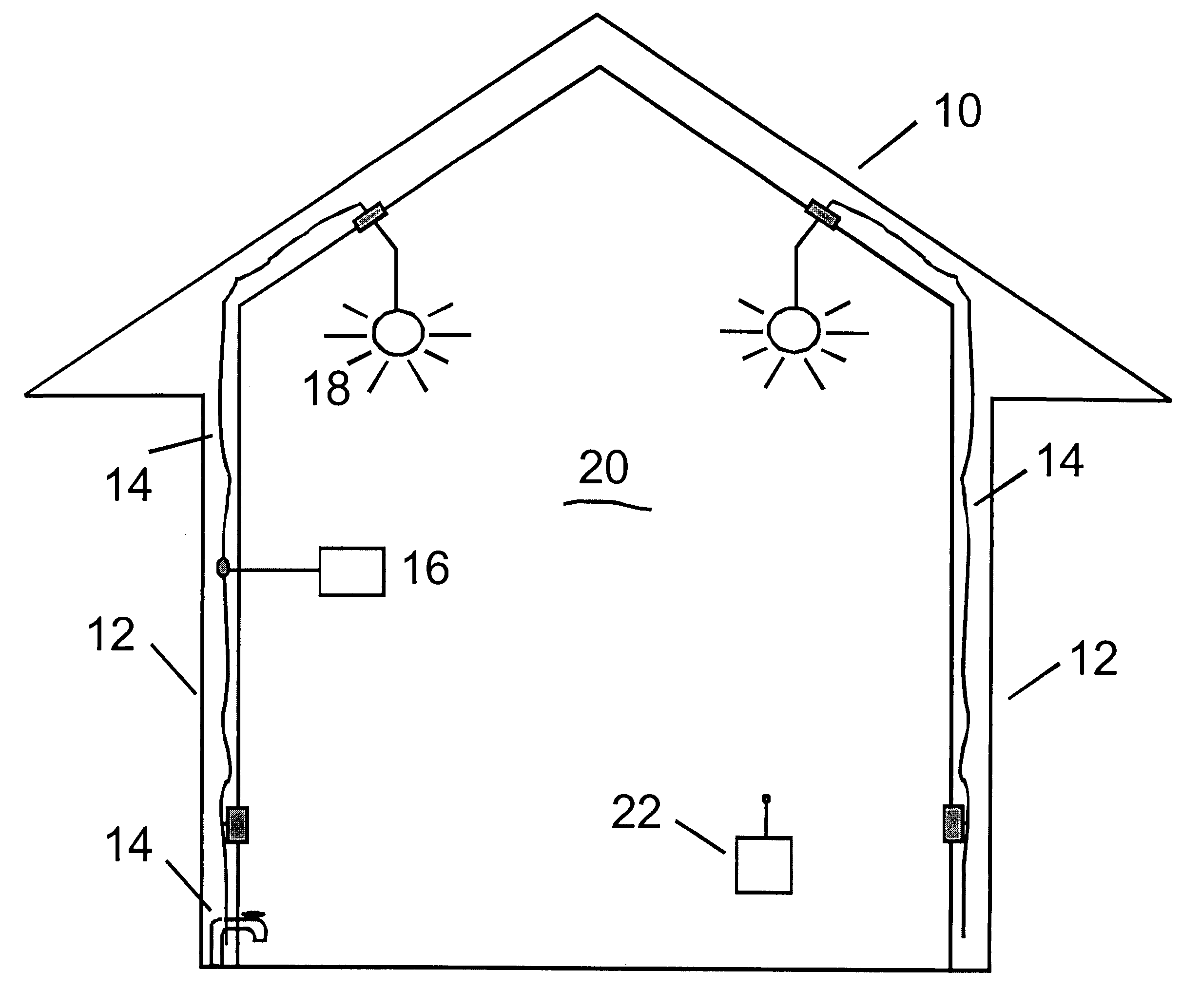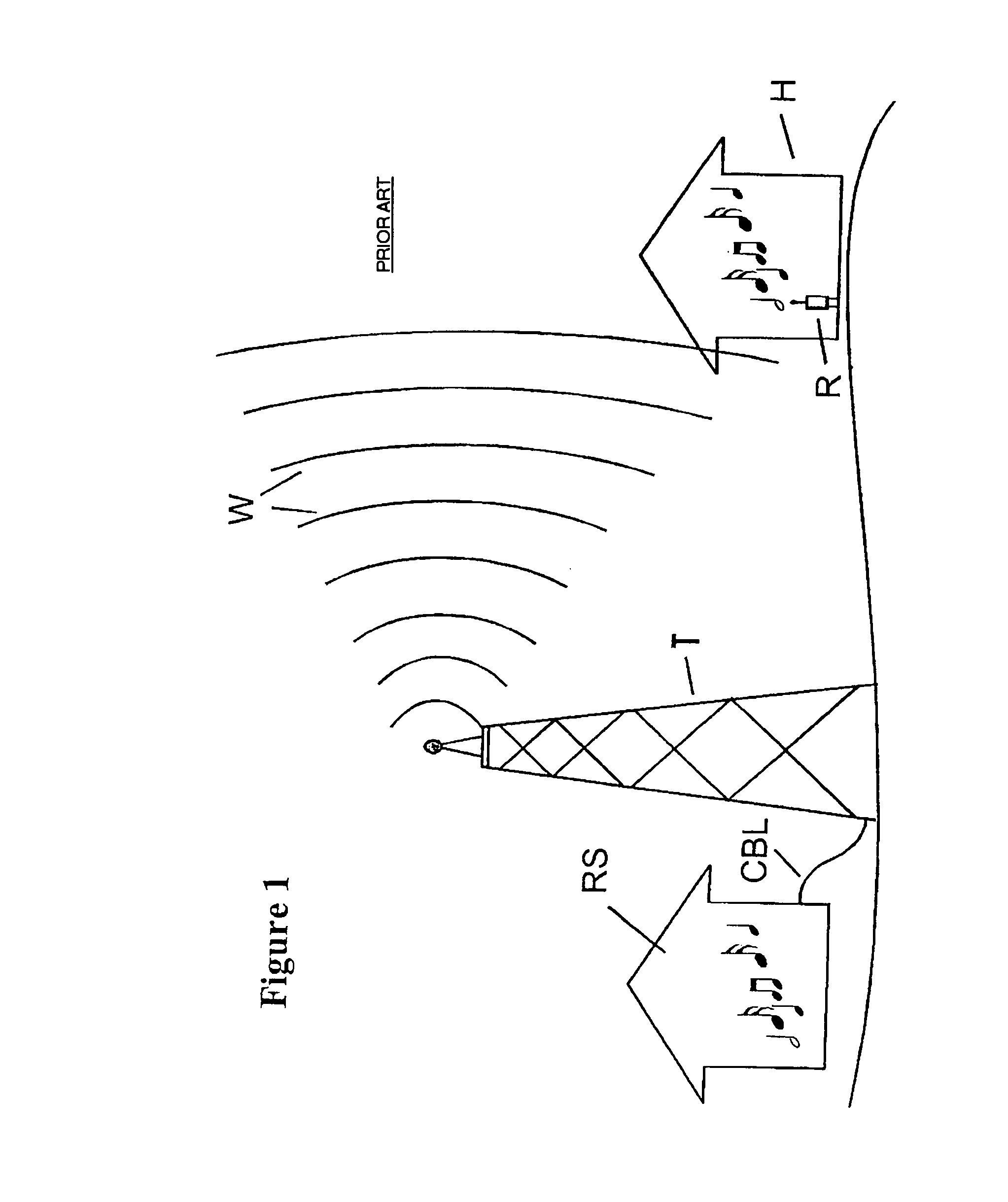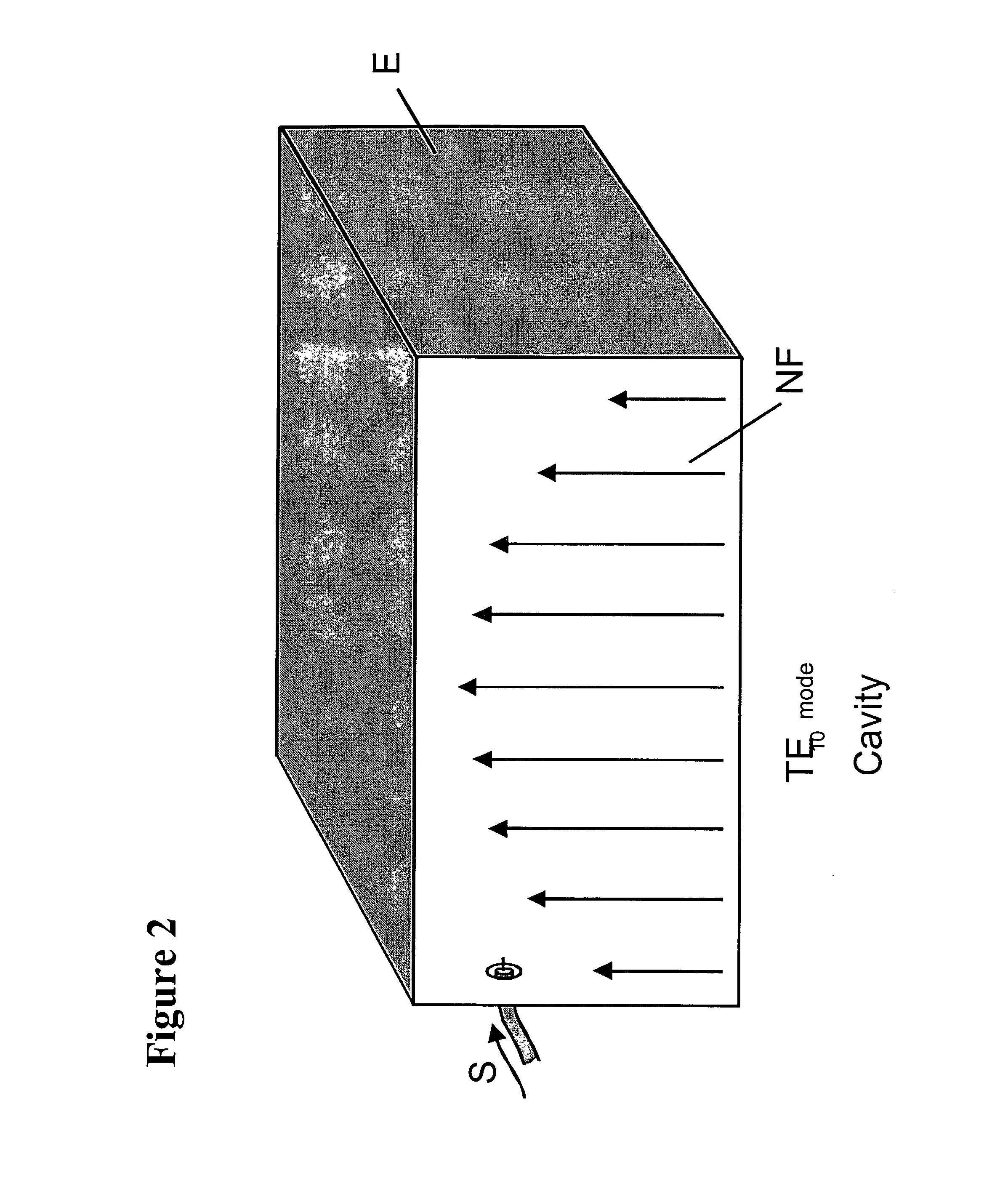Electromagnetic field communications system for wireless networks
a wireless network and electromagnetic field technology, applied in the direction of transmission, power distribution line transmission, broadcast with distribution, etc., can solve the problems of signal not easily passing through walls, dead spots, and hf band that has not been exploited in the past for communications networks
- Summary
- Abstract
- Description
- Claims
- Application Information
AI Technical Summary
Benefits of technology
Problems solved by technology
Method used
Image
Examples
Embodiment Construction
I. Electromagnetic Waves
[0026]When radio frequency energy is coupled to a cavity, an electromagnetic field is created within the cavity. This cavity may be formed of solid metallic surfaces or a grid of wires. The coupler or exciter establishes currents in the walls which in turn establish an internal electromagnetic field. This field distribution is invariant with the magnitude of the voltage component of the field, varying only at the carrier rate of the exciting frequency.
[0027]FIG. 1 supplies a simplified schematic illustration of a conventional radio station RS. Radio signals containing the information that will be broadcast to listeners are fed to a tall metal transmitting tower over a cable CBL. The tower is composed of conductive metal that creates a field of radio waves W. These fields propagate or travel great distances through the air until they reach a radio receiver R like the one pictured in the house H in FIG. 1. The radio R detects the signal, and converts it to audi...
PUM
 Login to View More
Login to View More Abstract
Description
Claims
Application Information
 Login to View More
Login to View More - R&D
- Intellectual Property
- Life Sciences
- Materials
- Tech Scout
- Unparalleled Data Quality
- Higher Quality Content
- 60% Fewer Hallucinations
Browse by: Latest US Patents, China's latest patents, Technical Efficacy Thesaurus, Application Domain, Technology Topic, Popular Technical Reports.
© 2025 PatSnap. All rights reserved.Legal|Privacy policy|Modern Slavery Act Transparency Statement|Sitemap|About US| Contact US: help@patsnap.com



